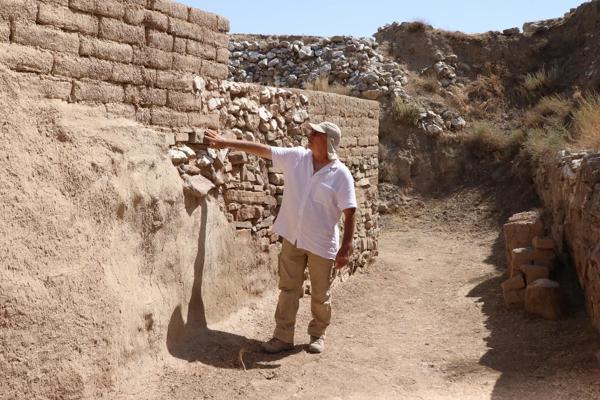Fires millennia ago fortify Hittite mudbrick structures
NİĞDE


The mudbrick structures from the Hittite period at Porsuk-Zeyve Höyük, located near a village in the Central Anatolian province of Niğde, have remarkably survived fires believed to have occurred between the 15th and 16th centuries B.C.
The excavation at the Porsuk-Zeyve Höyük site is led by Eric Jean, head of the excavation team and a faculty member at Hitit University’s Archaeology Department, since 1968.
He emphasized the importance of the site due to its proximity to the Mediterranean Sea. According to him, the first settlements in the area were established in the 1600s B.C.
“Porsuk-Zeyve Höyük is a key site, particularly because it holds evidence from Hittite, Iron Age, Hellenistic and Roman periods within its layers,” Jean said. “When examining the Bronze Age, it becomes clear that the Hittites constructed the strongest and largest walls.”
Jean explained that mudbrick was a favored material in Mesopotamia, partly due to the scarcity of stone. He noted that both stone and mudbrick were used in Anatolia, with mudbrick from the Hittite period being particularly robust, akin to concrete after being exposed to fire.
“Building high walls with only stone would have been incredibly challenging. Adobe, by contrast, is more practical, quicker to produce, and can be laid without heavy lifting,” Jean said.
The durability of these ancient structures is notable, withstanding time for over a millennium.
Jean pointed out that while adobe mudbrick structures need regular maintenance, the Hittite mudbrick constructions were reinforced by fire.
“Fires have actually helped preserve these structures, making them incredibly strong.”
The exact timeline of these fires remains uncertain, though archaeologists suggest that the first fire likely occurred in the first half of the 16th century B.C., while the second is estimated to have taken between late 14th and 15th centuries B.C.
